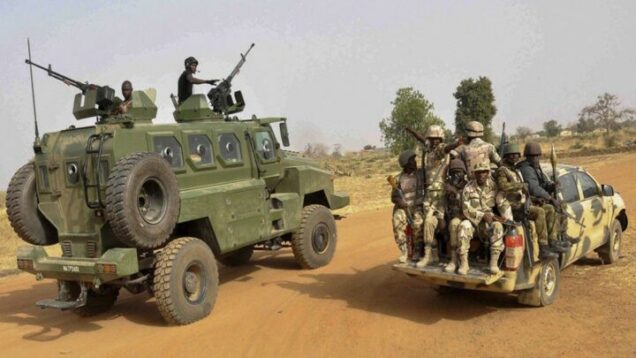24th December, 2021
By Cheta Nwanze
Elon Musk once said: “Some people don’t like change but you need to embrace change if the alternative is disaster,” and that is a path that the Nigerian has to commit himself to if we are going to see any success in the fight against terrorism.
The Nigerian military’s tactics against the terrorist groups have been rigid while the opponents have embraced adaptability. One accepts that guerrilla warfare tactics are aided by the lack of a need to secure and control territory which is a constraint sometimes for conventional national armies but more needs to be done.
Not only is Nigeria reeling from these attacks, but we’re also losing our soldiers on the battlefield and to a style that has become a depressing pattern where locations get attacked and ambushes are set up to hit the reinforcements that get called in response.
This was how we lost Brigadier-General Dzarma Kennedy Zirkusu in Askira Uba, Borno, and others like Colonel Dahiru Bako and Lt-Col M.Z. Manu.
The acquisition and use of mine-resistant armoured protected vehicles (MRAPs) have helped protect Nigerian soldiers from roadside bombings and mine explosions but now the terrorists have resorted to attacking military bases to steal these vehicles. I expect that the Nigerian Army would have the equipment and aptitude required to foresee these attacks and work at nullifying them with intelligence obtained from aerial surveillance equipment that provides early warnings on enemy movements.
Zirkusu’s death hurt and angered the military establishment and we can only hope that the 50 ISWAP fighters that were reported killed days later in the area were not random revenge killings as that would poison the hearts of the locals and make it harder to win this war.
With that being said, we return to the issue of adaptability and how important it is for Nigeria’s military high command to reevaluate its basic battle playbook after over a decade of limited success in fighting this insurgency. One worries about the soldiers getting weary and while the news that the army had killed the new ISWAP leader, Mallam Banu, ISWAP’s capacity to carry out operations seemed unharmed as they still launched attacks without missing a beat after the loss of two leaders in quick succession.
Telecom services were shut down in some states in the hope that the communication difficulties would make it harder for the terrorists but they have resorted to the use of walkie-talkies and the attacks on some local government areas in Sokoto state have shown that these measures have failed to hinder the terrorists but have stopped the innocent members of the general public from being able to call for help from the authorities.
It felt even worse when word got out that the attacks were a joint operation by erstwhile rival groups headed by kingpins, Halilu Sububu and Kachalla Turji, who seem to have chosen to unite their forces in a manner that has been felt in the deadly Goronyo market attack that had 60 casualties a month ago.
In early October, these terrorists moved to Sokoto state after suffering attacks from the Nigerian Army at their traditional hideouts in Zamfara. Their choice of location is said to be partly inspired by the need to be placed in the space between the Niger Republic and Zamfara to move for cover when attacks come from the army of the Republic of Niger. This is frustrating to see.
A stubborn commitment to a conventional military approach to solving an asymmetric security challenge is unwise especially with an army that is already stretched thin by involvement in roughly 30 Nigerian states.
Abuja must restrategise. Localised policing and well-thought-out community engagement must be a key factor in the choices made for the future and the 900km boundary that Nigeria’s north-west shares with the Niger Republic must be properly secured.
*Cheta Nwanze is the Lead Partner at SBM Intelligence and heads the research desk. He tweets @Chxta.
*this article was first published in Medium



